Resistance to Change: Meet the ‘Tators’
Tim Goshert, Reliable Plant Magazine, December 2008
Leading change is one of the most important aspects of implementing a successful maintenance and reliability improvement process. Many people today want immediate results, and they sometimes overlook cultural change and its effect on the implementation process. Leaders of this change often put more focus on the fancy technical tools and analysis processes than the cultural change needs and aspects. My experience is that you must motivate and encourage people to change their own personal behaviors to enhance and implement M&R processes. Also, I have seen there can be huge resistance to change. This needs to be recognized and managed to be ultimately successful.
I’ve been fortunate in that I’ve been able to benchmark M&R improvement processes within and outside Cargill for the past decade. These visits have included trips all over the world. In a recent trip to one of our factories in Pennsylvania, I was introduced to a family of cultural change resistors that I’d like to share with you.
I want to credit Kristin Mills from our cocoa and chocolate business, who has allowed me to share some of her work in change management. Kristin works in the safety arena and has applied this in her work in changing safety behaviors at her plant. She introduced me to the “Tator Family,” a family displaying resistance to change. The original source is unknown, however Kristin was able to obtain the latest family photos for our use. Meet the family:
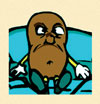
Speck Tator: The dad doesn’t accept change well. He’s a “wait and see” kind of guy. He will try to refuse to be observed by giving you behavioral resistance.
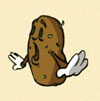
Hesi Tator: The mom will give plenty of reasons why you should not observe her, even though she thinks the process is a good idea. She may act confused or change the subject. She is giving you cognitive resistance.
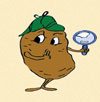
Agi Tator: The son is smart. He likes to keep his co-workers upset about something. He’ll spread rumors about the process, such as it’s a way to “get us in trouble” or “spy on us.” He’ll try to get you off track or make you angry. This is emotional resistance.

Medi Tator: This is the daughter that sees good in everything. She wants everyone to be happy. She will agree with any feedback you give her, but will offer very few comments herself. She will offer no resistance.
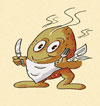
Dick Tator: He’s the uncle from out of town (Idaho). He’s used to telling everyone what to do. He may say things like, “who died and put you in charge?” or “I’ve been doing this job since before you were born.” Dick likes to control and will give you a great deal of social resistance.

Vegi Tator: This is the granddaddy of them all. He’s been here for 40 years. He has developed some bad habits through the years and doesn’t want anyone to draw attention to him. He just wants to be left alone. This is behavioral resistance.
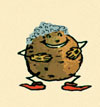
Imi Tator: This is everyone’s grandma. She wants to fit in. If she sees someone doing something wrong, she probably won’t say anything and will probably do it that way, too. If others in her group accept the process, she will too.
I hope you enjoyed meeting the family as much as I did. I was impressed by the family’s passion in different ways to resist change. Recognizing the signs of “Tator Family” members in your organization is one of the first steps to formulating plans to overcome and/or check resistance. Overcoming resistance and allowing people to concentrate on positive aspects and results of the M&R improvement process can lead to better results for your organization.
Tim Goshert, Reliable Plant Magazine, December 2008




